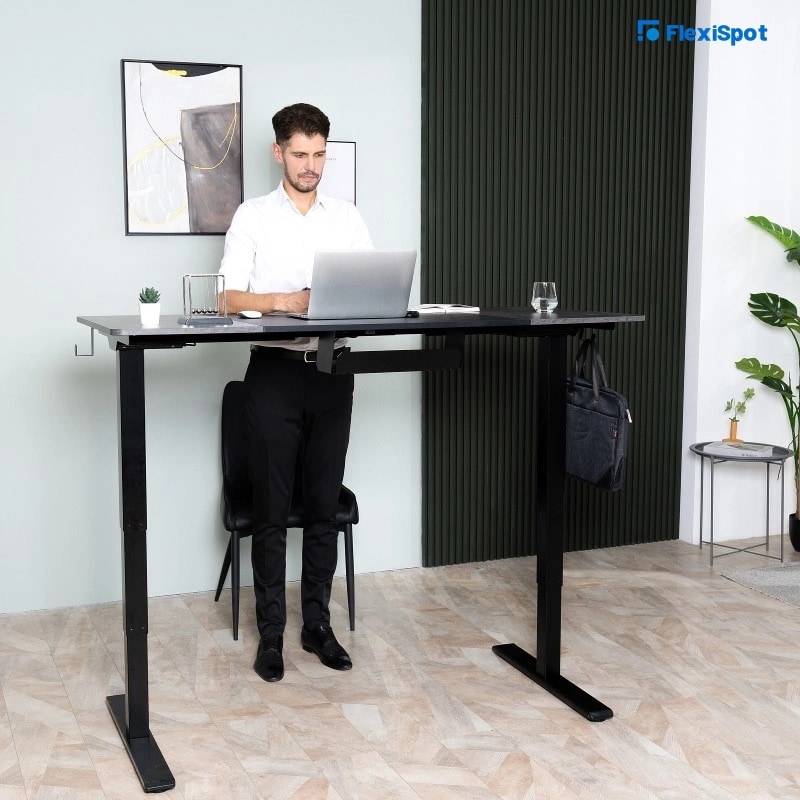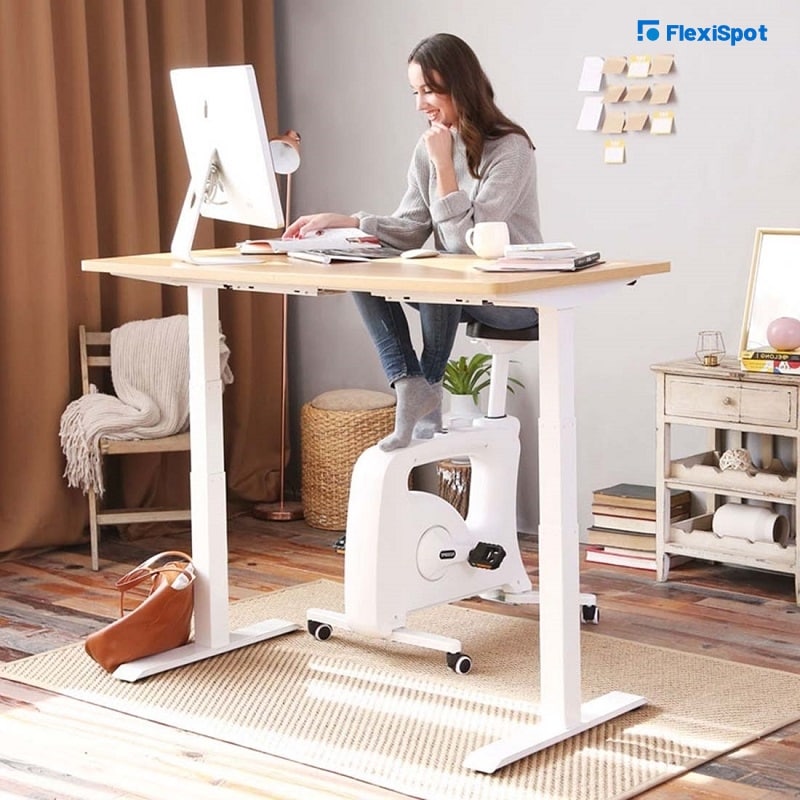Standing desks have become incredibly popular, especially in office spaces. They are not just a hot topic. In fact, countries all over the world are introducing stand-up desks and training their employees on how to properly use them. Are you wondering why? It's because standing desks have loads of advantages!
Adjustable desks, also known as desks that are electric, can be adjusted by height. These allow you to sit or stand whenever you feel like while continuing to work. You can find them in every shape and size, depending on your physique. These are best suited for any work environment or employer working from home. Stand-up desks are manufactured in a way to ensure optimal results when working and are backed up by loads of ergonomic research.
Of course, like any trend, there are loads of misconceptions about standing desks. Some people do not believe that they are useful and have no effects on health, while others believe that there are side effects attached to these desks. Let's find out the truth.
Misconception 1: To Gain Maximum Benefits, You Will Have to Stand for Longer Than You Sit
One of the most outrageous misconceptions about adjustable desks is that the stand times need to be significantly higher than the sit times. However, this is not true. A standing desk gives you a choice to keep alternating between sitting and standing.
This means that you do not have to stand all day, nor do you have to sit all day. The standing option allows you to take a break from sitting so that your muscles do not become sore and your back posture is not affected. Most people take a break from sitting every 45-minutes, but you need to look for something that works for you. The best part about adjustable desks is that you can sit or stand with just a touch of the button.
Misconception 2: Standing and Working is Bad for the Body
The truth about standing desks is that if you stand properly and work, your back will actually hurt less, and you will feel physically better because you are getting a break between your sitting sessions. Hunching over your desk will make your back hurt more, destroying your posture in the long term. Do you know how your back, legs, and hips feel at the end of a long day? Imagine not feeling that way ever!
With standing desks, you can take advantage of alternating between sitting and standing, rather than sitting on a desk for 9-hours in a stretch. There is no set rule for how long you have to stand- it is all about balance. You can stand for however long you want, based on your comfort. If you are cutting back on your sitting time by even two hours a day, you will see a great improvement in your body.
Misconception 3: If You Stand and Work, You Will Feel More Tired
Whoever tells you this clearly has no idea what they are talking about. You may think that standing for long hours during the day will only tire you out and make you feel exhausted. However, the truth is that standing in intervals will make you feel more energetic.
Not only will you feel more focused on your work, but you will also be less distractive and more productive. Combine this with stretching and taking breaks, and you will find that you are successfully able to increase your concentration levels and keep fatigued at bay.
Misconception 4: Sit-Stand Desks are the Same as Standing Desks
Just as you cannot sit all day, you cannot stand all day either. You should not use standing desks for longer periods of time. Instead, they can be kept as a shared space by a group of employees. If you are part of a workplace, opting for a sit-stand desk is a better option.
Of course, some tasks can only be performed when seated. Even if you work a desk job, your body needs a break, which means that you should incorporate some form of activity. A sedentary lifestyle is the worst thing for your health. Even though you might find that standing desks are cheaper, they can never be compared to sit-stand desks in terms of benefits.
Misconception 5: For Workplace Ergonomics, a Sit-Stand Desk is a One-Stop Solution
Now, this isn't a complete misconception. There is some truth to this statement. Sit-stand desks are extremely important if you are looking at workplace ergonomics, but they are not the only solution.
Sit-stand adjustable desks have loads of benefits, from increased productivity, focus, increasing attention span, and lots more. Regardless of whether you are standing or sitting, the keyboard, monitor, and mouse placement, along with the chair you use, must be placed properly so that it does not affect your posture negatively. Remember, if you want to establish good workplace ergonomics, all these factors must be considered.
Misconception 6: Rising Desks are Expensive
You might find that a conventional workstation desk costs less than a rising desk in monetary terms. However, if you factor in the long-term benefits of a rising desk, you will find that they are definitely worth the investment.
Not only do standing desks boost your health and well-being, but you will also notice how you have to take lesser sick days from work because your health is great. Keep in mind that the healthier you are as an employee, the more likely you are to like your job and become better at your tasks.
Conclusion
In the 21st century, you will find loads of changes taking place in the world. Standing desks are an innovative way to ensure that employees are happier at the workplace and are more productive. The conventional "one-size-fits-all" desk furniture is no longer in style as it becomes more outdated by the day as more and more businesses understand the importance of active furniture and standing desks in the workplace.
By the end of this article, you will realize that adjustable desks increase health as well as productivity in the office. Healthy employees mean happier employees who are more satisfied with their environment and are less likely to switch or find better places to work at. However, remember that standing desks need to call for higher ergonomic awareness than traditional workstations. Make sure to educate all other employees before introducing this design in the workplace. Don't worry; the investment will be completely worth it.



